Derby's Heritage Part 24 - The Arboretum (Sections B &
C)
w/e 25 December 2011
All this week's pictures were taken
with a Kodak DX6490
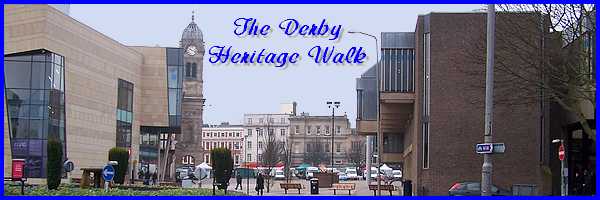
As we discovered in the previous part, there are
five main sections in The Arboretum and in this part we will
pass through the second and third and in addition make a slight
detour to the adjacent Nature Reserve.
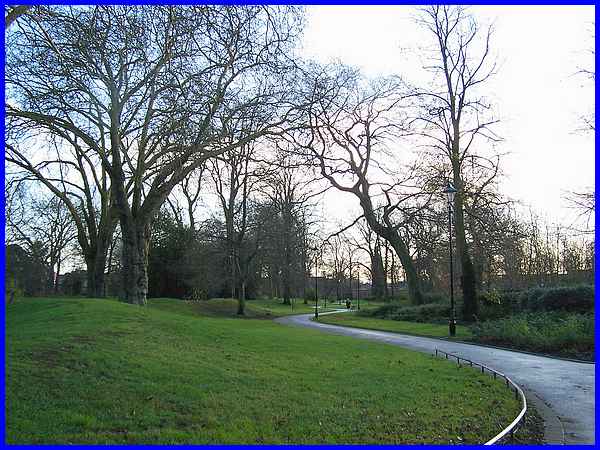
The serpentine path continues through Section B around the edge
of the Arboretum and although the catalogue identifies eighteen
trees including mainly cherries, limes and Honey locusts, only
two appear on the Tree Trail leaflet.
|
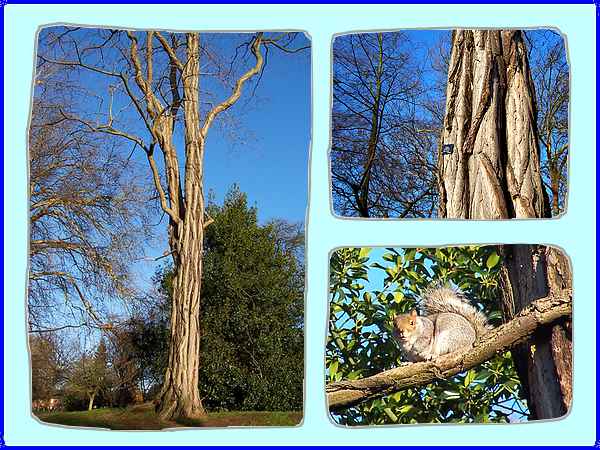
The first is a fine example from the Leguminosae family commonly
known as a False Acacia. I believe that this is the tree found
to be a bigger and better specimen than the one previously thought
to be the best in the country at Kew Gardens in London. An expert
from Kew visited the Arboretum to help compile the catalogue
and was surprised to find such a fine specimen. The grey squirrel
is an optional extra and although usually regarded as pests,
squirrels in the Arboretum are almost tame and are often hand
fed by local residents and therefore cause only minimal damage
to the trees. This particular tree was one of the original 1840
plantings in the Arboretum.
|
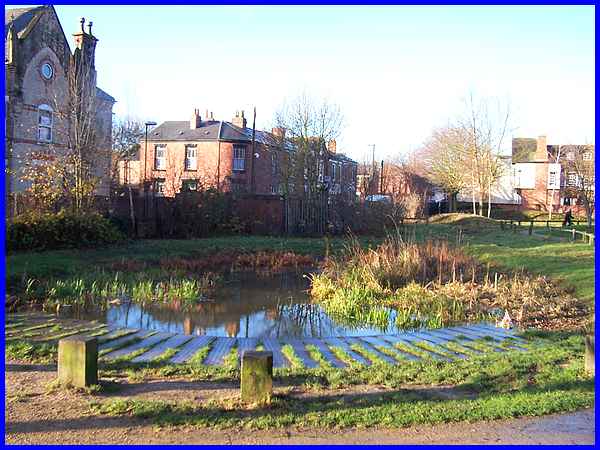
Having photographed the False Acacia we returned to the start
of Section B and took another path temporarily leaving the Arboretum
to pass through an adjacent area identified as the Nature Reserve
passing this pond in the process.
|
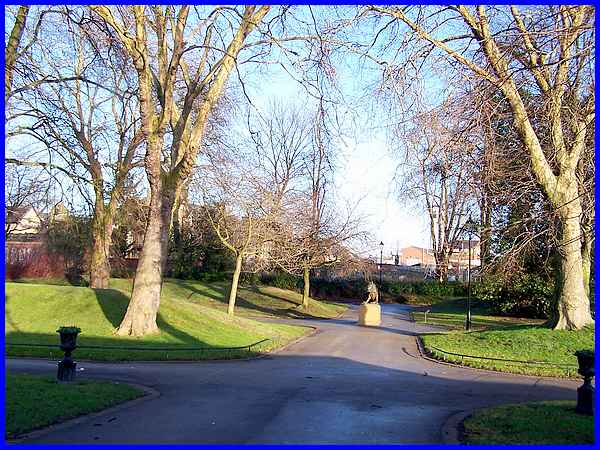
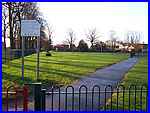 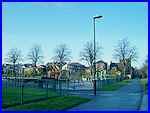 The
path through the Nature Reserve leads to the Arboretum Playground
(left & right) but passing between two pavilions took us
back into the Arboretum. Directly ahead is the bronze statue
of the Florentine Boar which we will see in more detail later
when we return from Section C, on the right at this point. Section
B is to the immediate left and Section D is also on the left
but beyond the statue. The
path through the Nature Reserve leads to the Arboretum Playground
(left & right) but passing between two pavilions took us
back into the Arboretum. Directly ahead is the bronze statue
of the Florentine Boar which we will see in more detail later
when we return from Section C, on the right at this point. Section
B is to the immediate left and Section D is also on the left
but beyond the statue.
|
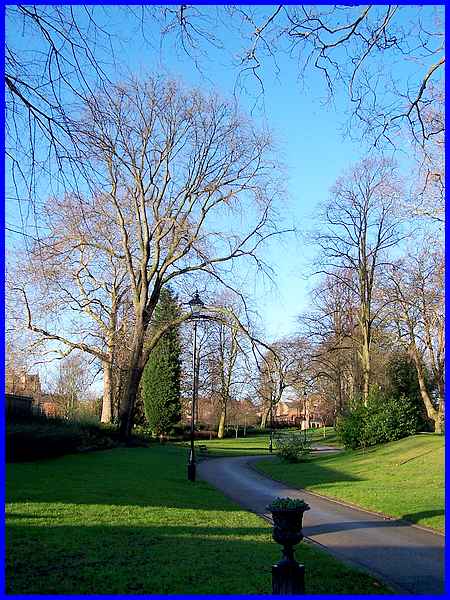
Turning to look back along the serpentine path the second notable
tree from the Tree Trail leaflet in Section B is visible on the
left. This is another tree planted in 1840 and is a Wych Elm.
This is a rare and significant specimen as many similar trees
in the UK were wiped out in the 1960s and 70s by the fungal infection
known as Dutch Elm Disease.
|
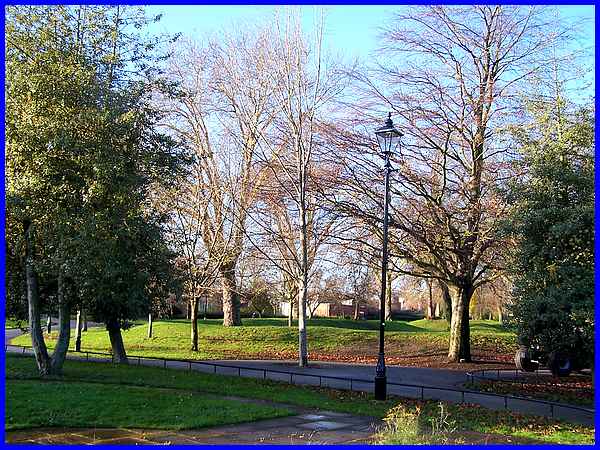
Section C occupies the eastern end of the Arboretum with an entrance
from Reginald Street and it was from close to there that this
image was captured viewing some of the twenty six trees identified
in the catalogue. Four of those twenty six feature on the Tree
Trail, one of which is the Copper Beech seen here to the right
of the ornate lamp.
|
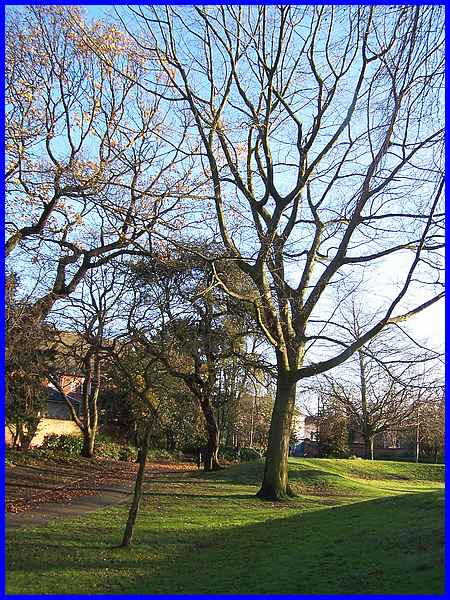
Continuing through Section C and now heading back towards the
Boar I left the serpentine path to climb one of the mounds and
look back at two more trees on the Tree Trail. The small Amur
maple (an Acer) on the left is not one of them but the large
Red Oak ahead is as is the twisted Wild Pear (another original
planting of 1840) beyond.
|
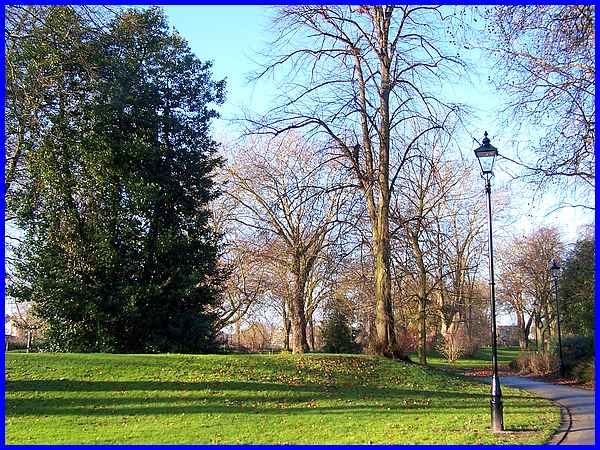
The final tree of note in this section is the Highclere Holly,
a spineless form that originated at Highclere in Berkshire resulting
from a cross between the common holly and the Canary Holly. This
is a male specimen and bears no fruit. Out of sight behind the
Highclere Holly is the Florentine Boar which is where we'll resume
our walk through the Arboretum in the next part.
|

